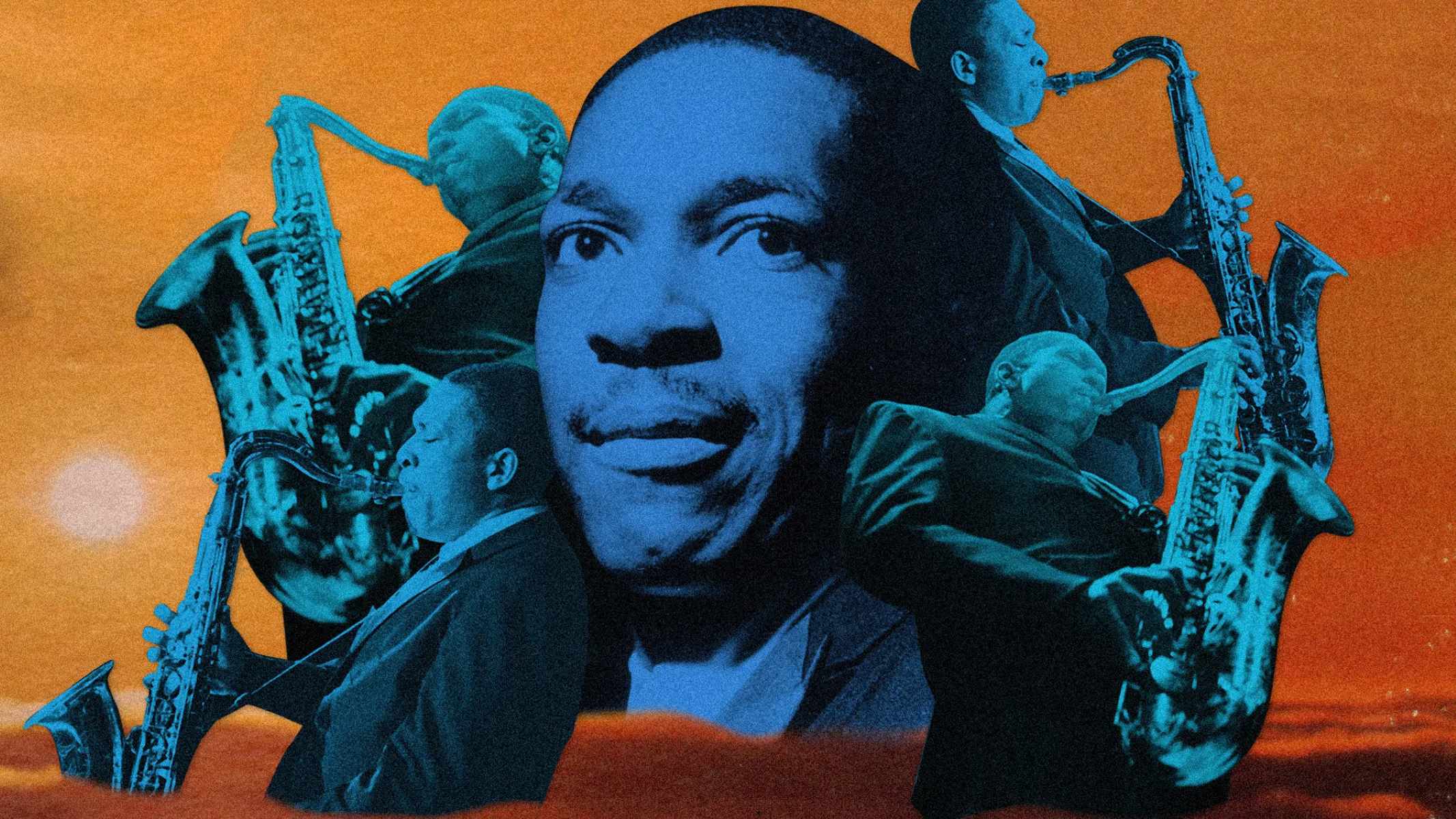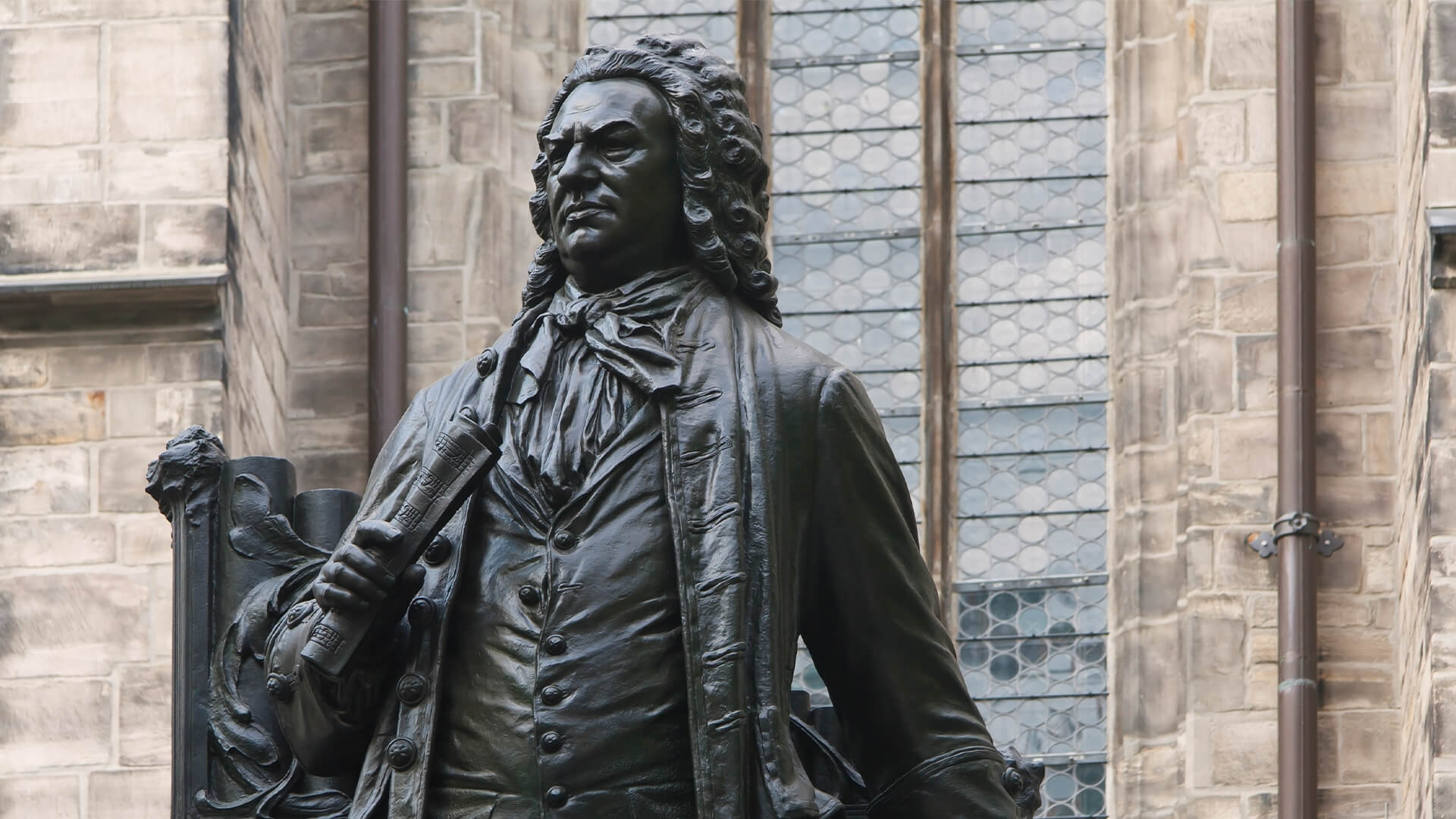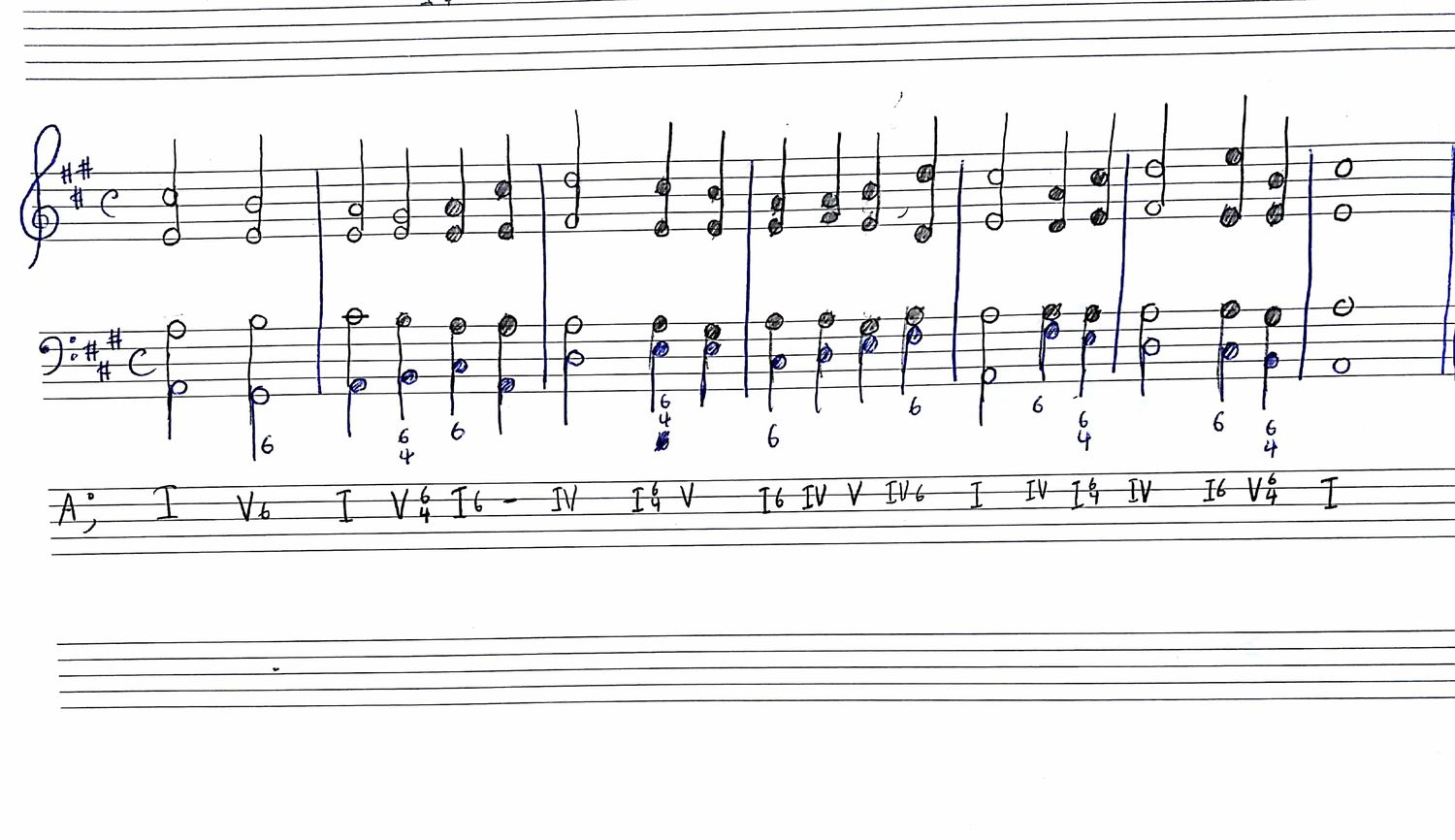Home>Production & Technology>Music Theory>Why Music Theory Is Important


Music Theory
Why Music Theory Is Important
Published: January 30, 2024
Discover why music theory is crucial for all musicians. Enhance your understanding and skills with comprehensive music theory lessons.
(Many of the links in this article redirect to a specific reviewed product. Your purchase of these products through affiliate links helps to generate commission for AudioLover.com, at no extra cost. Learn more)
Table of Contents
- Introduction
- What is Music Theory?
- The Basics of Music Theory
- Importance of Music Theory in Composition
- Understanding Musical Notation with Music Theory
- Enhancing Musical Performance through Music Theory
- Improvisation and Music Theory
- Appreciation and Analysis of Music with Music Theory
- Music Theory and Developing a Musical Ear
- Conclusion
Introduction
Music theory is the foundation upon which the language of music is built. It is the study of how music works, including the structure, harmony, rhythm, and melody. While it may seem daunting to some, music theory is an essential tool for musicians, composers, and music enthusiasts alike. It provides a deeper understanding of the art form and empowers individuals to express themselves creatively.
Whether you are a beginner learning to play an instrument or an experienced musician looking to expand your musical horizons, music theory is invaluable. It allows you to grasp the intricacies of music and engage with it on a more profound level.
In this article, we will explore the importance of music theory and how it contributes to various aspects of music, from composition and musical notation to performance and improvisation. We will also delve into how music theory aids in the appreciation and analysis of music, as well as its role in developing a musical ear.
So, whether you are a musician, a music student, or simply someone who enjoys listening to music, read on to discover why music theory is fundamental in unlocking the language of music and enhancing your musical journey.
What is Music Theory?
At its core, music theory is the study of the fundamental principles and concepts that govern music. It encompasses the rules and structures that define how music is constructed and organized. Music theory explores how different musical elements, such as pitch, rhythm, harmony, and melody, interact with each other to create a cohesive and aesthetically pleasing composition.
Music theory provides a framework for understanding and analyzing music. It helps musicians make sense of what they are playing or hearing and allows them to communicate and interpret music more effectively. It is like the grammar of music, providing a set of guidelines and terminology to describe and discuss musical ideas.
One of the key components of music theory is notation, which is the system of writing down music using symbols and musical symbols, such as notes, rests, and dynamics. Notation allows musicians to interpret and perform music accurately and consistently across different contexts. It also enables composers to transcribe their musical ideas onto paper and share them with others.
Music theory is not limited to classical music or traditional Western music. It encompasses a wide range of musical styles and genres, including jazz, rock, pop, and world music. While the specific rules and conventions may vary across different genres, the underlying principles of music theory remain consistent.
Learning music theory is not only beneficial for musicians and composers but also for music enthusiasts who want to deepen their appreciation and understanding of music. It provides a framework for listening attentively and analyzing the various elements and structures within a piece of music.
Overall, music theory is the key to unlocking the language of music. It allows us to understand, create, and appreciate the intricate beauty and emotional depth of music. Without music theory, the world of music would be shrouded in mystery and confusion.
The Basics of Music Theory
Understanding the basics of music theory is essential for anyone looking to delve into the world of music. It provides a solid foundation upon which more complex musical concepts can be built. While there are numerous aspects to music theory, let’s explore some key elements:
- Pitch and Scales: Pitch refers to the perceived highness or lowness of a sound. Scales are a series of notes ordered by pitch. The most common scales in Western music are the major and minor scales.
- Rhythm: Rhythm refers to the arrangement of sounds and silences in music. It gives music its sense of time and is measured in beats and measures.
- Intervals: Intervals are the distances between two pitches. They are named according to their size, such as a minor third or a perfect fifth.
- Chords: Chords are made up of three or more pitches played simultaneously. They provide harmony and support to the melody.
- Key Signatures: Key signatures indicate the key of a piece of music and the sharps or flats that appear consistently throughout the piece.
- Time Signatures: Time signatures indicate the number of beats per measure and the note value that receives one beat. Common time signatures include 4/4, 3/4, and 6/8.
- Dynamics and Articulations: Dynamics refer to the volume of a musical piece, while articulations indicate how notes are to be played, such as staccato or legato.
Mastering these fundamental elements of music theory allows musicians to communicate and interpret music more effectively. It provides a shared language among musicians and enables them to collaborate seamlessly.
While this overview only scratches the surface of music theory, it highlights the importance of grasping the basics. As musicians delve deeper into their musical journey, they can explore more advanced concepts and techniques, expanding their expressive and creative abilities.
Importance of Music Theory in Composition
Music theory plays a crucial role in the process of music composition. It provides a solid foundation and a set of tools for composers to structure their musical ideas and bring them to life. Here are some key reasons why music theory is essential in composition:
- Structure and Form: Music theory helps composers understand and create different musical structures and forms, such as sonata form, rondo, or theme and variations. By understanding the principles of form, composers can effectively organize their musical ideas and create a coherent and engaging composition.
- Harmony: Harmony is the study of how notes and chords work together. Music theory allows composers to explore various chord progressions, harmonic sequences, and modulations, enhancing the emotional impact of their compositions. It helps composers create tension and release, experiment with different tonalities, and craft unique and captivating harmonies.
- Melody and Counterpoint: Music theory provides guidelines for composing captivating melodies and harmonizing them with accompanying voices or instruments. It helps composers create melodic lines that are captivating, memorable, and emotionally resonant.
- Rhythm and Groove: Music theory informs composers about different rhythmic patterns and techniques that can be used to create a sense of rhythm and groove in a composition. It helps in the placement of accents, the use of syncopation, and the creation of interesting rhythmic motifs.
- Texture and Orchestration: Understanding music theory allows composers to experiment with different instrumental combinations and textures. They can make informed choices about orchestration, layering different instruments or voices to create a rich and balanced sound.
Without a solid understanding of music theory, composers may stumble upon these elements through trial and error. However, studying music theory provides a foundation of knowledge and techniques that allow composers to make intentional and informed decisions in their compositions.
While creativity plays a vital role in composition, it is enriched and guided by an understanding of music theory. Composers who have a strong grasp of music theory can more effectively communicate their musical ideas, experiment with different techniques, and create compositions that are harmonically rich, structurally sound, and emotionally impactful.
Understanding Musical Notation with Music Theory
Music theory and musical notation go hand in hand. Notation is the system of writing down music using symbols and musical symbols to represent pitch, duration, dynamics, and other musical elements. It serves as a universal language that allows musicians to read and interpret music accurately. Here’s why understanding musical notation is essential with music theory:
- Translating Musical Ideas: Music theory gives composers the ability to translate their musical ideas onto paper through notation. With a solid understanding of notation, composers can write down their composition accurately, ensuring that the performers can interpret it as intended.
- Communication and Collaboration: Musical notation provides a standardized way for musicians to communicate and collaborate. Musicians from different backgrounds can come together and play music written in notation, as it transcends language barriers and allows for precise interpretation and execution.
- Interpretation by Performers: Music theory allows performers to interpret musical notation accurately. They can understand the rhythm, pitch, dynamics, and articulations as intended by the composer, resulting in a faithful rendition of the musical piece.
- Preserving Musical Works: With music theory and notation, musical compositions can be preserved and passed down through generations. Notation provides a written record of the music, allowing future generations to study, analyze, and perform historical compositions.
- Learning and Education: Music theory, in conjunction with notation, forms the basis for music education. It allows students to learn music in a structured and systematic manner. By studying notation, students develop skills in reading, interpreting, and performing music, fostering a deeper understanding of musical concepts.
Understanding musical notation empowers musicians to explore a vast repertoire of musical works. It enables them to accurately reproduce the compositions of various composers, from classical symphonies to modern pop songs.
Moreover, music theory provides a bridge between the written notation and the actual sound produced. Musicians can visualize and hear the music in their minds as they read the notation, making connections between the symbols on the page and the sounds they create.
Overall, a strong grasp of musical notation, coupled with music theory, is vital for any musician, composer, or music enthusiast. It enables effective communication, artistic expression, and the preservation of musical works for generations to come.
Enhancing Musical Performance through Music Theory
Music theory plays a significant role in enhancing musical performance. It provides musicians with a deeper understanding of the composition they are playing, allowing them to deliver a more nuanced and expressive interpretation. Here are some ways in which music theory enhances musical performance:
- Interpretation: Music theory provides performers with insight into the composer’s intentions. By studying the structure, harmony, and form of a piece, musicians can make informed decisions about phrasing, dynamics, and tempo, bringing out the true essence of the music.
- Analysis: A solid foundation in music theory enables performers to analyze and break down a piece of music. Understanding the key signatures, chord progressions, and melodic patterns allows musicians to identify recurring themes, motifs, and variations, leading to a deeper interpretation and execution.
- Improvisation: Music theory provides the tools for improvisation. Whether it’s in jazz, blues, or even classical music, understanding chord progressions, scales, and modes allows musicians to seamlessly create spontaneous and meaningful musical passages, enhancing their improvisational skills.
- Expressive Techniques: Music theory introduces performers to a range of expressive techniques. From vibrato and glissando to trills and ornamentation, understanding these techniques through music theory enables musicians to add richness, emotion, and personal flair to their performances.
- Collaboration: Music theory serves as a common language among musicians. When performing with others, understanding the theoretical concepts allows for effective communication and collaboration, ensuring a cohesive and synchronized performance.
Furthermore, music theory enhances musicianship by improving sight-reading abilities. Familiarity with musical notation, key signatures, and rhythmic patterns enables performers to quickly absorb and interpret new music, allowing for more efficient rehearsals and performances.
By integrating music theory into their practice routines, musicians can also cultivate a deeper musical understanding. Recognizing the relationships between different musical elements, such as melody, harmony, and rhythm, enhances musical intuition and facilitates the exploration of various musical genres and styles.
Ultimately, music theory empowers performers to go beyond playing the notes on the page. It provides the knowledge and tools to bring a deeper emotional connection to their performances, creating a more engaging and impactful experience for both the musicians and the audience.
Improvisation and Music Theory
Improvisation is the art of creating music in the moment. It allows musicians to spontaneously express themselves and explore new musical ideas. While improvisation may seem free and unstructured, music theory forms the foundation for successful improvisation. Here’s why understanding music theory is essential for improvisation:
- Scales and Modes: Music theory introduces performers to various scales and modes. By understanding these scales and their corresponding harmonies, improvisers can create melodic and harmonic patterns that fit within the musical context. Music theory provides the knowledge to choose appropriate scales and modes that convey the desired emotions and create a cohesive improvisation.
- Chord Progressions and Harmony: Improvisation often involves playing over established chord progressions. Music theory helps improvisers understand the relationship between chords and scales, enabling them to choose notes that harmonize with the underlying chords. This allows improvisers to create melodic lines that complement the harmony and engage the listener.
- Rhythmic Techniques: Music theory provides the foundation for understanding rhythmic patterns, accents, and syncopation. Improvisers can use this knowledge to experiment with different rhythmic ideas, creating engaging and dynamic improvisations. Additionally, understanding rhythmic concepts allows improvisers to interact effectively with other musicians in a collaborative improvisational setting.
- Phrasing and Dynamics: Music theory guides improvisers in creating well-structured and expressive phrases. Understanding concepts such as articulations, dynamics, and musical form helps improvisers shape their improvisations, adding nuance and emotion to their playing. It allows for intentional and deliberate expression, capturing the listener’s attention and conveying the intended musical message.
- Aural Skills: Music theory helps develop aural skills, including the ability to recognize intervals, chords, and melodic patterns by ear. Improvisers with a strong foundation in music theory can listen more attentively and respond in real-time to the musical environment, making their improvisations more spontaneous and harmonic.
Through the study of music theory, improvisers gain a toolbox of ideas, techniques, and concepts that can be applied and expanded upon during improvisation. While improvisation allows for creative freedom, the understanding of music theory provides a framework within which improvisers can make informed choices and create coherent and musically satisfying improvisations.
Furthermore, music theory encourages improvisers to break free from established patterns and explore new possibilities. It provides a platform for experimentation and encourages musicians to take risks, resulting in unique and innovative musical expressions.
Ultimately, the combination of music theory and improvisation leads to a more profound musical experience. It allows improvisers to express themselves authentically while maintaining a strong connection to the musical language and the audience they are performing for.
Appreciation and Analysis of Music with Music Theory
Music theory is not only beneficial for musicians and composers but also for music enthusiasts who want to deepen their appreciation and understanding of music. By applying music theory principles, individuals can engage in a more meaningful analysis of musical compositions and develop a deeper appreciation for the art form. Here’s how music theory enhances the appreciation and analysis of music:
- Structure and Form: Music theory provides a framework for analyzing the structure and form of a musical composition. It allows listeners to identify sections such as verses, choruses, and bridges, and understand how they fit together to create a cohesive whole. By recognizing the underlying structure, listeners can appreciate the compositional choices made by the artist.
- Harmony and Chord Progressions: Understanding harmony and chord progressions through music theory enables listeners to identify and appreciate the specific chordal choices made in a piece of music. Whether it’s a simple progression or a complex modulation, recognizing the harmonic choices adds a layer of depth to the listening experience.
- Melody and Counterpoint: Music theory allows listeners to analyze and appreciate melodic lines and the interplay of different melodic voices. By understanding melodic contour, phrasing, and the relationship between multiple melodies, listeners gain a deeper understanding of the composer’s creative choices and can better connect with the emotional essence of the music.
- Rhythm and Meter: Music theory provides a framework for analyzing rhythm and meter in music. By discerning rhythmic patterns, syncopation, and meter changes, listeners can appreciate the complexity and precision of the rhythmic elements. This understanding enhances the appreciation of different musical genres, from intricate polyrhythms in jazz to driving rhythmic grooves in rock music.
- Instrumentation and Texture: Music theory allows listeners to appreciate the various instrumental or vocal choices made in a composition. Understanding orchestration and texture enhances the awareness of different timbres and the layering of musical elements, enhancing the overall listening experience.
By applying music theory principles, listeners can actively engage with music on a deeper level. It adds a new dimension to their listening experience, enabling them to uncover hidden layers, appreciate the composer’s craftsmanship, and connect with the emotional journey of the music.
Music theory analysis is not limited to classical music; it can be applied to any genre or style. Whether it’s analyzing the harmonic complexity of jazz improvisation or understanding the intricate production techniques in contemporary pop music, music theory provides the tools to delve into the intricacies of any musical composition.
Ultimately, the integration of music theory into the appreciation and analysis of music allows listeners to become more active participants in the musical experience. It deepens the connection with the music and fosters a greater understanding and appreciation for the artistry behind every composition.
Music Theory and Developing a Musical Ear
Music theory and developing a musical ear go hand in hand. A musical ear refers to the ability to hear, recognize, and understand the different elements of music, such as melody, harmony, rhythm, and timbre. By studying music theory, individuals can enhance their musical ear and deepen their overall musical perception. Here’s how music theory aids in developing a musical ear:
- Ear Training: Music theory provides the foundational knowledge for ear training exercises. Ear training involves activities that help individuals recognize and identify musical intervals, chords, and melodies by ear. By practicing ear training exercises based on music theory principles, individuals can sharpen their listening skills and develop a more accurate and discerning musical ear.
- Musical Intuition: Studying music theory allows individuals to develop a sense of musical intuition. As they become familiar with various musical concepts and structures, they can anticipate and predict musical patterns and changes. This heightened intuition enables individuals to engage more deeply with music, detect nuances, and make connections between different musical elements.
- Transcribing and Reproducing Music: Music theory empowers individuals to transcribe and reproduce music by ear. By understanding the principles of notation, scales, and chord progressions, individuals can listen to a piece of music and accurately notate it or reproduce it on their instrument. This process not only sharpens their listening skills but also reinforces their understanding of music theory in a practical and hands-on manner.
- Improvisation and Compositional Skills: Music theory guides individuals in improvising and composing music. By understanding the relationship between scales, chords, and harmonic progressions, individuals can use their musical ear to create melodic and harmonic ideas. The ability to trust and follow one’s musical ear is essential in generating original musical material and improvising freely.
- Deepening Musical Interpretation: A developed musical ear allows individuals to deeply interpret and express music. By listening attentively, they can identify nuances in dynamics, phrasing, and articulation, and apply that knowledge to their own performances. This heightened perception and attention to detail result in more expressive and nuanced interpretations of musical works.
Developing a musical ear through music theory is an ongoing process that requires consistent practice and active engagement with music. By integrating music theory knowledge with regular listening exercises, individuals can continue to refine their musical ear and enhance their overall musical abilities.
Ultimately, a well-developed musical ear strengthens the connection between the listener and the music. It enables individuals to appreciate the intricacies, emotions, and beauty of music on a deeper and more profound level, enhancing the overall enjoyment and understanding of the art form.
Conclusion
Music theory is a powerful tool that enhances our understanding and appreciation of music in various ways. Whether you are a musician, composer, or music enthusiast, studying music theory allows you to delve deeper into the intricacies of music and unlock its language.
Through music theory, we gain insight into the fundamental principles that govern music, such as pitch, rhythm, harmony, and form. It provides the knowledge and vocabulary to describe, analyze, and communicate musical ideas effectively.
Music theory plays a vital role in composition, enabling composers to structure their musical ideas, create captivating melodies, and harmonize them with supporting chords. It enhances musical performance by guiding interpretation, analysis, and improvisation, allowing musicians to express themselves more meaningfully and connect with their audience.
Additionally, music theory enriches our experience of music through a deeper appreciation and analysis. By understanding the structure, harmony, and texture of a musical composition, we can more fully grasp the composer’s intentions and interpretive choices. It allows us to engage with music in a more active and informed manner, enhancing our overall enjoyment and connection to the art form.
Moreover, music theory aids in the development of a musical ear. Through ear training and practical application, we can sharpen our listening skills, recognize musical patterns, and reproduce music by ear. This deepens our musical intuition and enhances our improvisation, composition, and interpretive abilities.
In conclusion, music theory is an essential component of our musical journey. It provides the foundational knowledge and tools for musicians, composers, and listeners to engage with music on a profound level. By incorporating music theory into our learning and appreciation of music, we can unlock its full potential, foster creativity, and experience the joy and wonder of this universal language.











